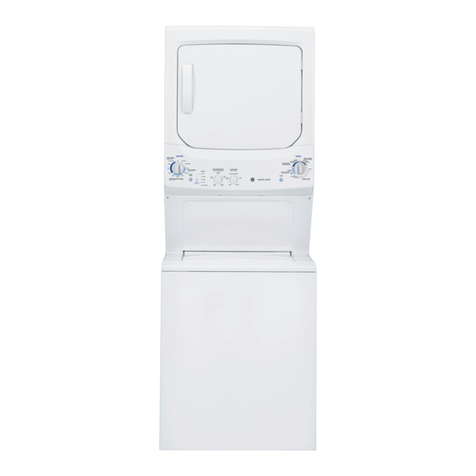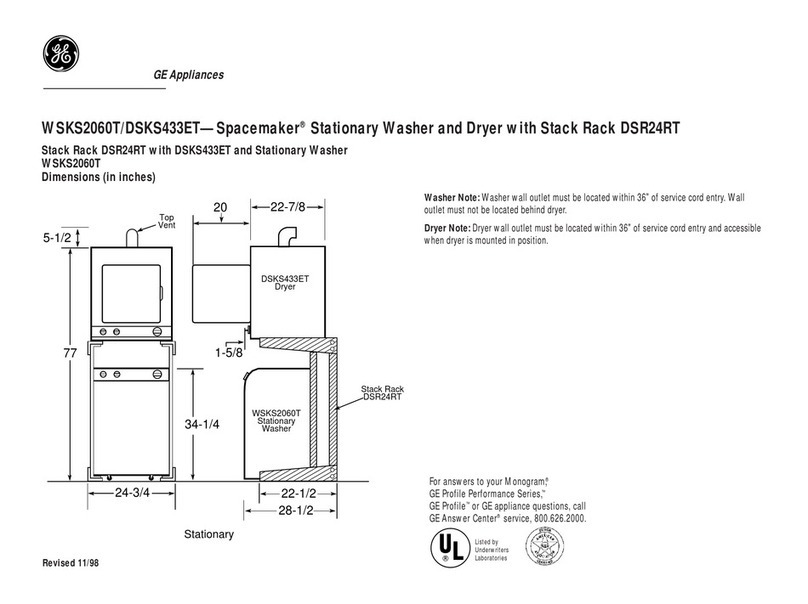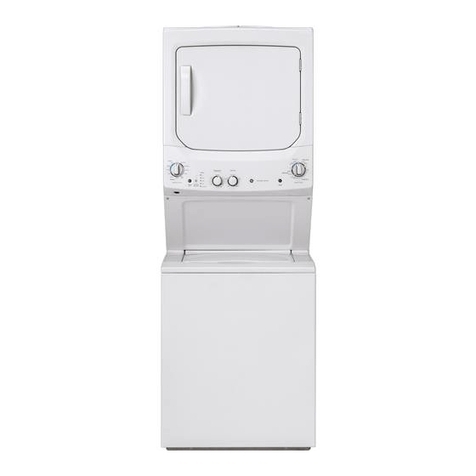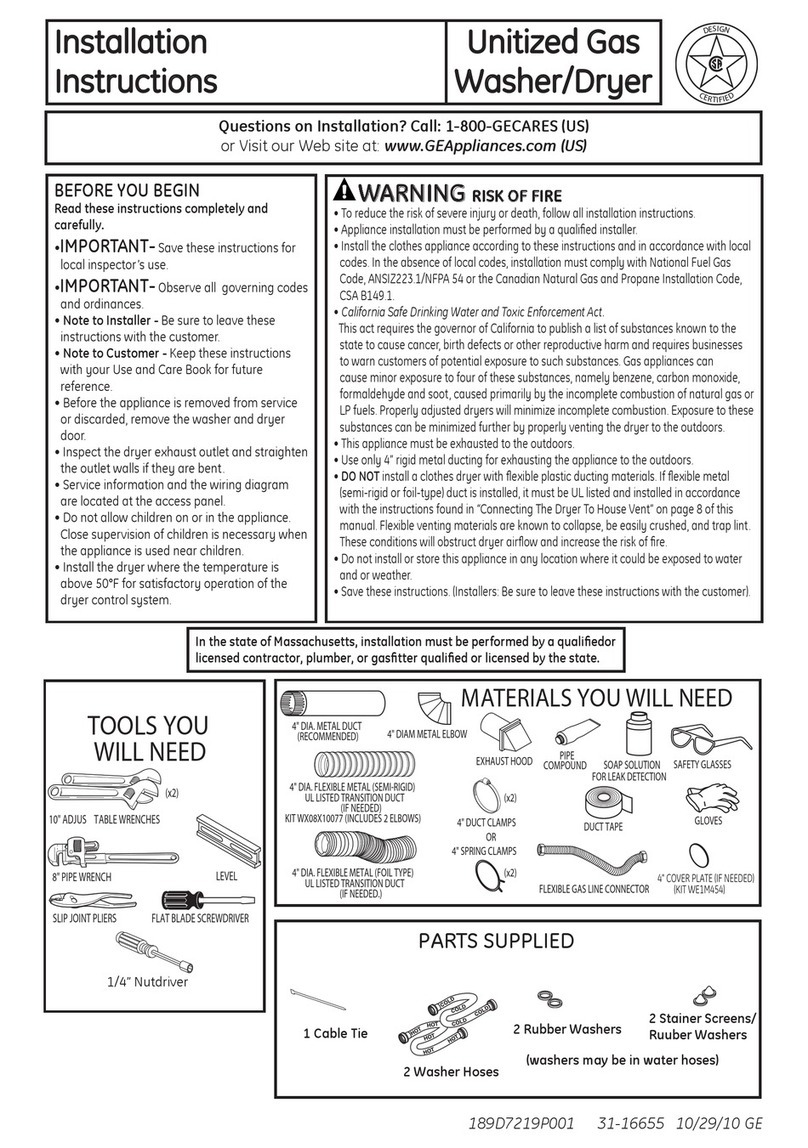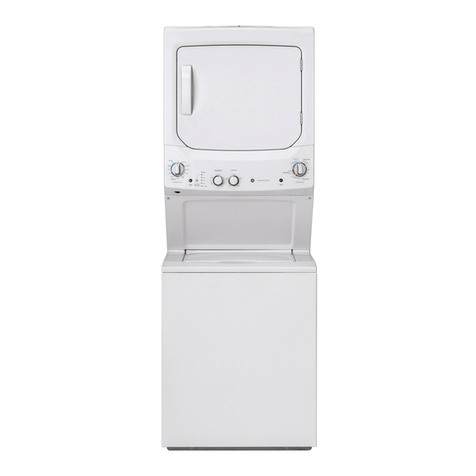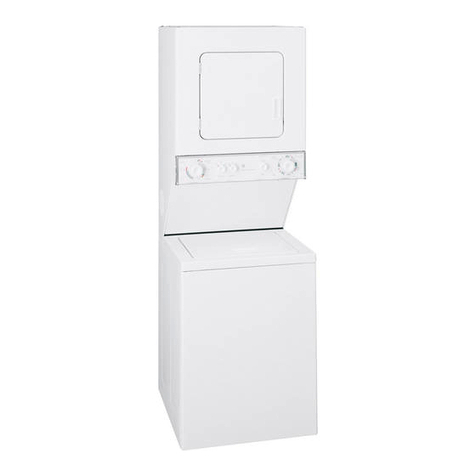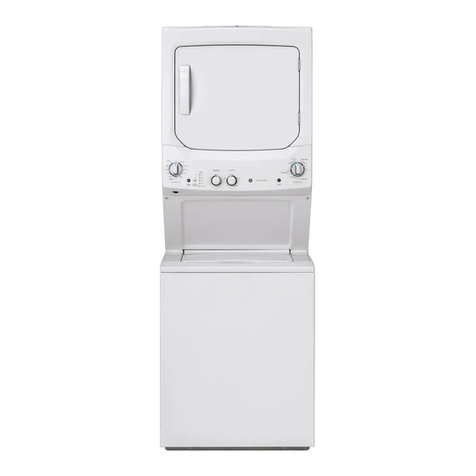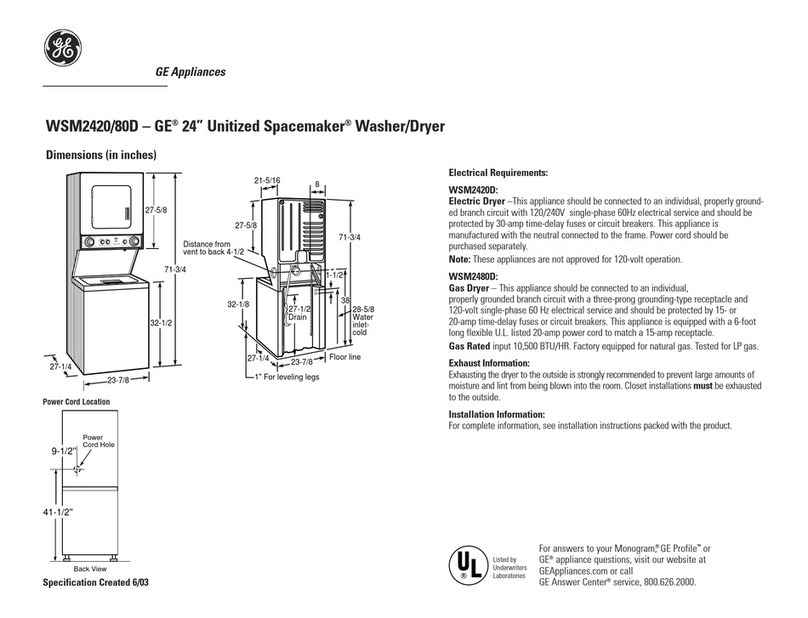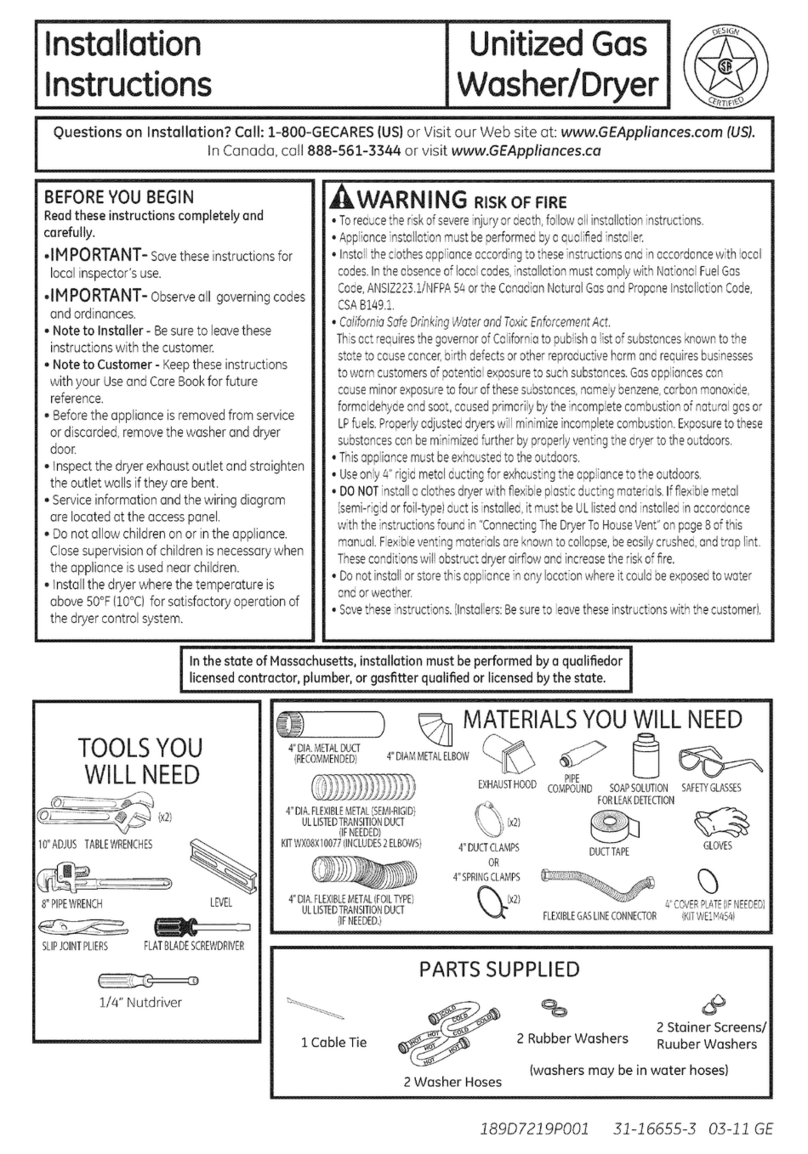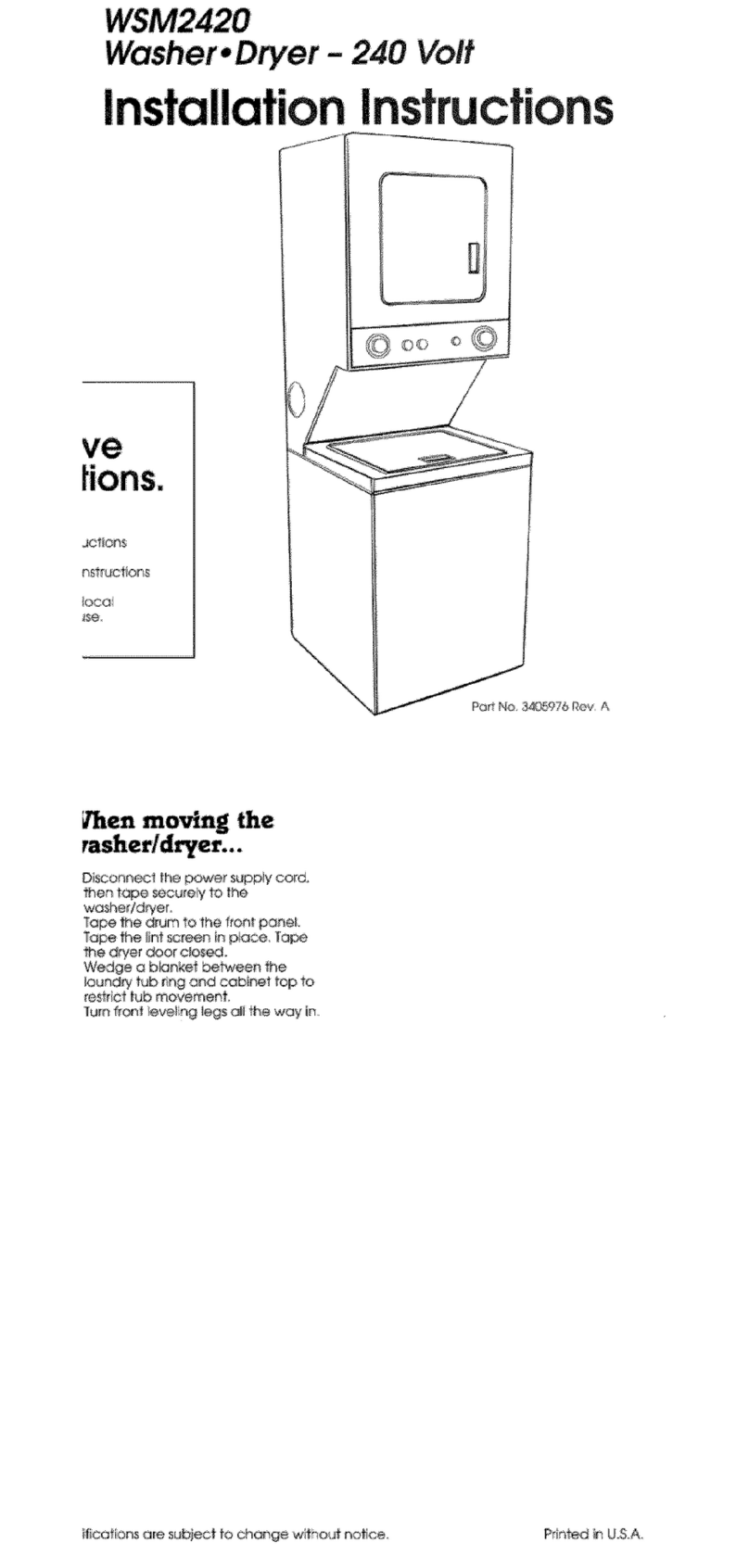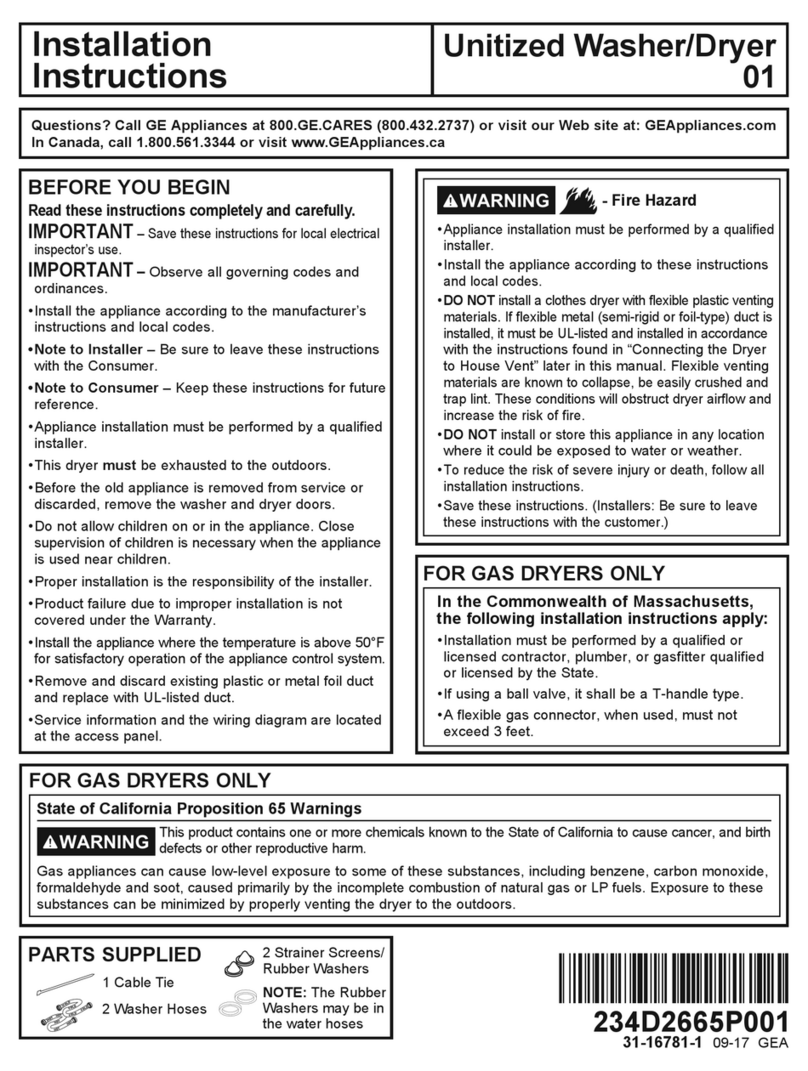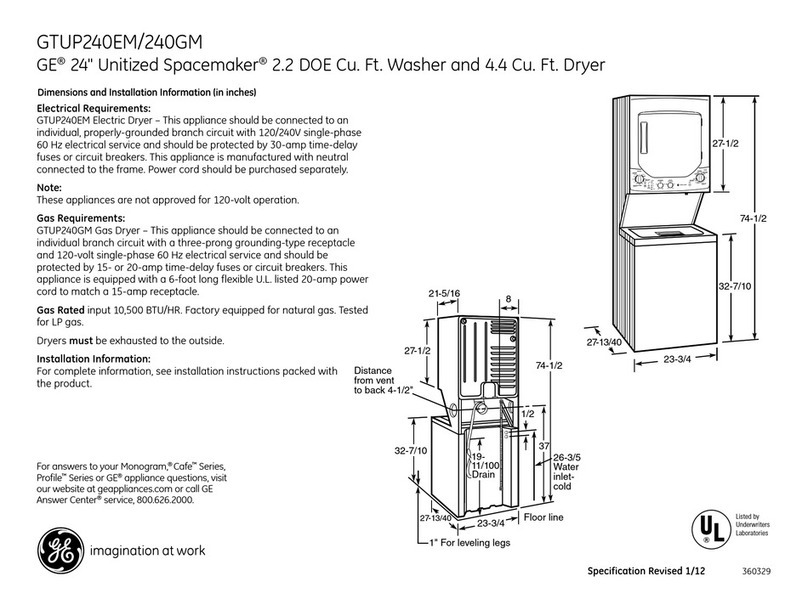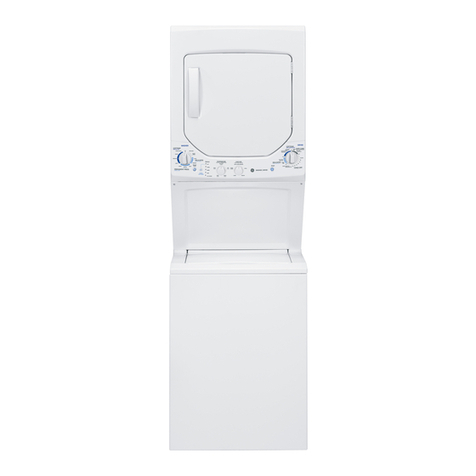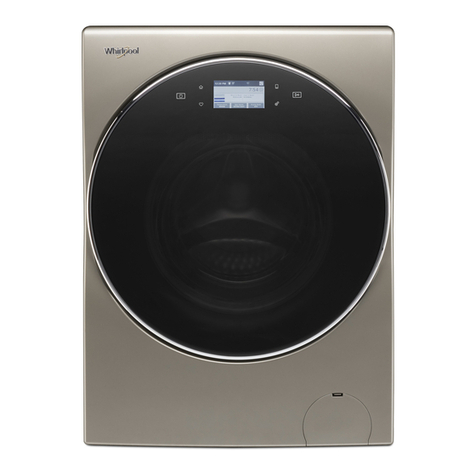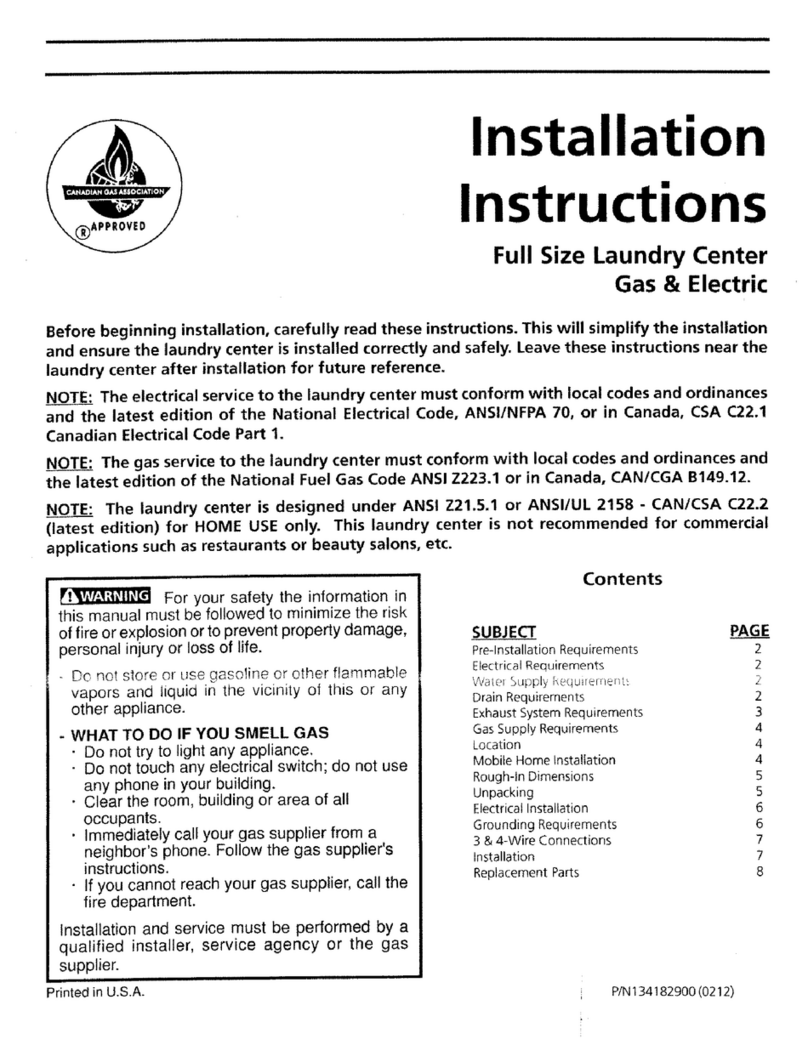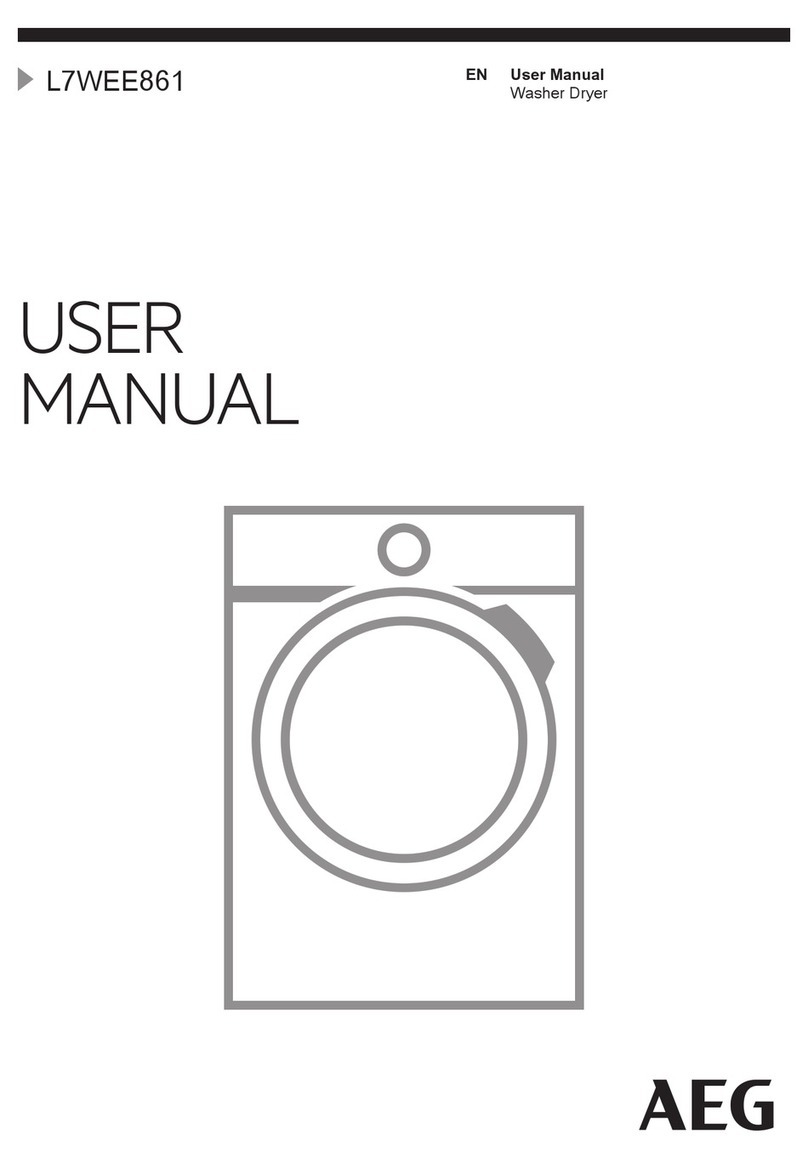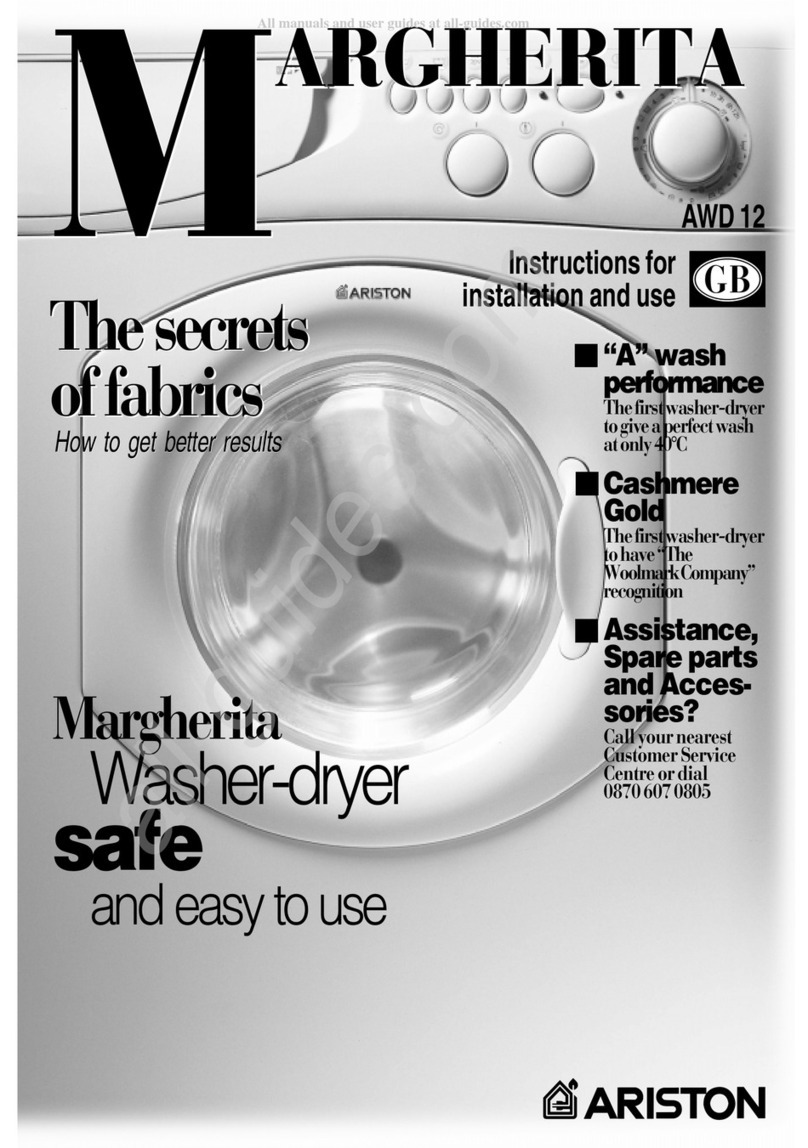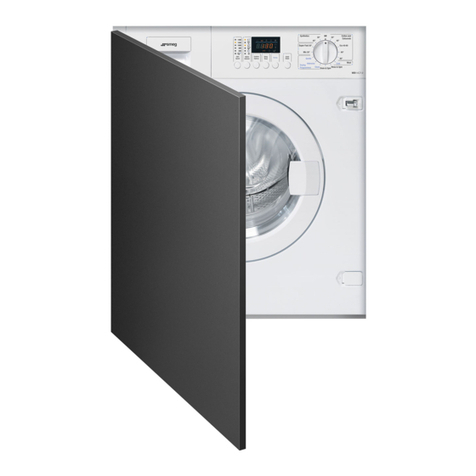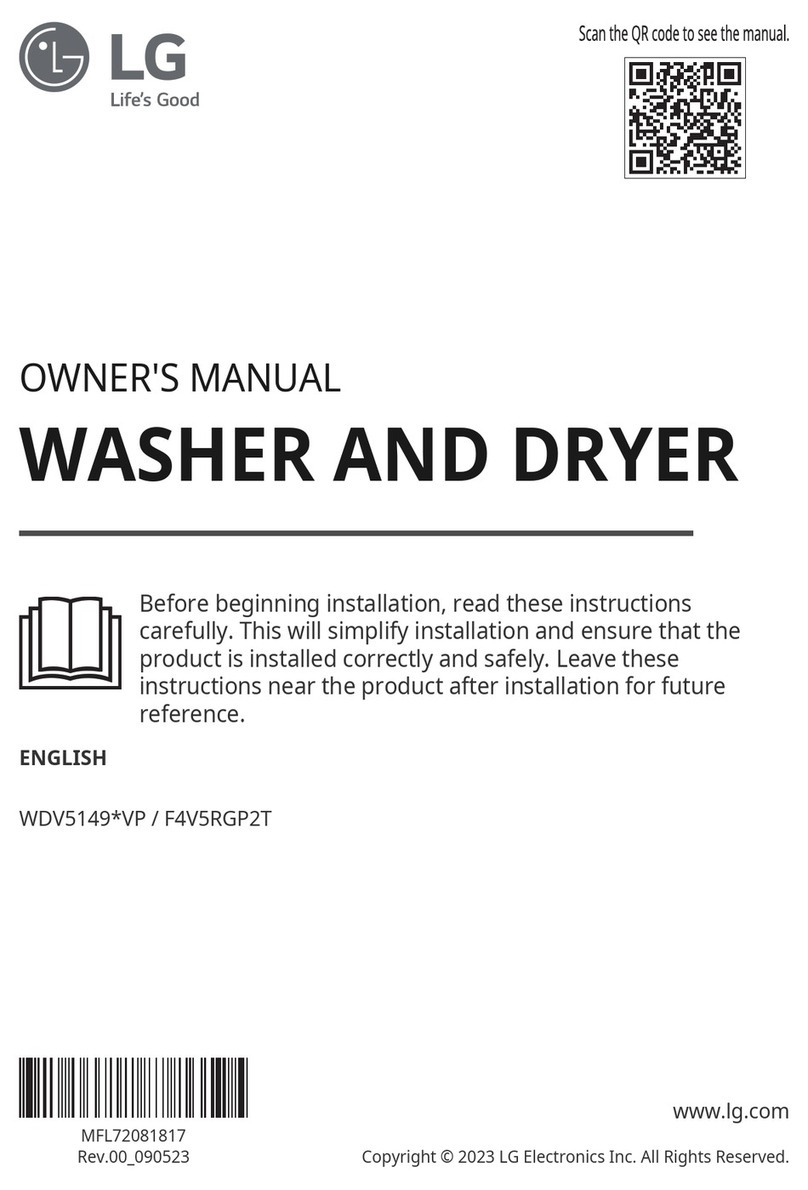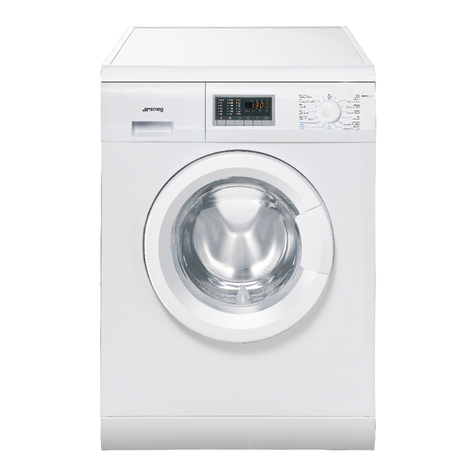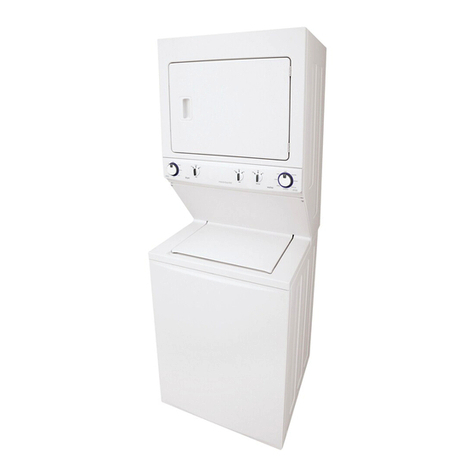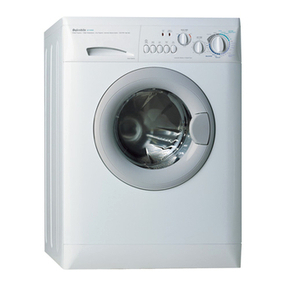
49-3000359 Rev 0 3
IMPORTANT SAFETY INFORMATION
READ ALL INSTRUCTIONS BEFORE USING THE APPLIANCE
SAFETY INFORMATION
READ AND SAVE THESE INSTRUCTIONS
To reduce the risk of death, fire, explosion, electric shock, or injury to persons when using
your appliance, follow basic precautions, including the following:
ŶDO NOT wash or dry articles that have been previously cleaned in, washed in, soaked in or spotted with
gasoline, dry-cleaning solvents, or other flammable or explosive substances, as they give off vapors that could
ignite or explode.
ŶDO NOT place items exposed to cooking oils in your dryer. Items contaminated with cooking oils may
contribute to a chemical reaction that could cause a load to catch fire. To reduce the risk of fire due to
contaminated loads, the final part of the tumble dryer cycle occurs without heat (cool down period). Avoid
stopping a tumble dryer before the end of the drying cycle unless all items are quickly removed and spread
out so that the heat is dissipated.
ŶDO NOT add gasoline, dry-cleaning solvents, or other flammable or explosive substances to the wash water.
These substances give off vapors that could ignite or explode.
ŶUnder certain conditions, hydrogen gas may be produced in a hot-water system that has not been used for
2 weeks or more. HYDROGEN GAS IS EXPLOSIVE. If the hot water system has not been used for such a
period, before using a washing machine, turn on all hot-water faucets and let the water flow from each for
several minutes. This will release any accumulated hydrogen gas. As the gas is flammable, DO NOT smoke
or use an open flame during this time.
ŶDO NOT allow children to play on or in this appliance. Close supervision of children is necessary when this
appliance is used near children. Before the appliance is removed from service or discarded, remove the door
and lid to the drying and washing compartments. Failure to follow these instructions may result in death or
injury to persons.
ŶDO NOT reach into the appliance if the drum, tub or agitator is moving to prevent accidental entanglement.
ŶFor waterproof, water-resistant and bulky items, only use the Bulky Items (or Delicates) cycle. DO NOT use
other cycles for these items. Using other cycles can cause excessive vibration and may result in injury or
damage to the washer, walls, or floor. DO NOT mix waterproof and non-waterproof items.
ŶDO NOT dry articles containing foam rubber or similarly textured rubber-like materials.
ŶClean lint screen before or after each load.
ŶDO NOT operate the dryer without the lint filter in place.
ŶFollow all fabric care instructions and warnings to prevent melting of garments or damage to the appliance.
ŶDO NOT use fabric softeners or products to eliminate static unless recommended by the manufacturer of the
fabric softener or product.
ŶDO NOT store combustible materials, gasoline or other flammable liquids near the dryer. Keep area around
the exhaust opening and adjacent surrounding areas free from the accumulation of lint, dust and dirt.
ŶThe interior of the appliance and exhaust duct should be cleaned periodically by qualified service personnel.
ŶDO NOT install or store this appliance where it will be exposed to the weather.
ŶDO NOT tamper with controls.
ŶDO NOT repair or replace any part of this appliance or attempt any servicing unless specifically recommended
in the user maintenance instructions or in published user repair instructions that you understand and have the
skills to carry out.
ŶDO NOT operate this appliance if it is damaged, malfunctioning, partially disassembled, or has missing or
broken parts including a damaged cord or plug.
ŶUnplug the appliance or turn off the circuit breaker before servicing. Pressing the Power or Start/Pause
button DOES NOT disconnect power.
ŶDO NOT spray any type of aerosol into, on or near appliance, at any time. DO NOT use any type of spray
cleaner when cleaning dryer interior. Hazardous fumes or electrical shock could occur.
WARNING



